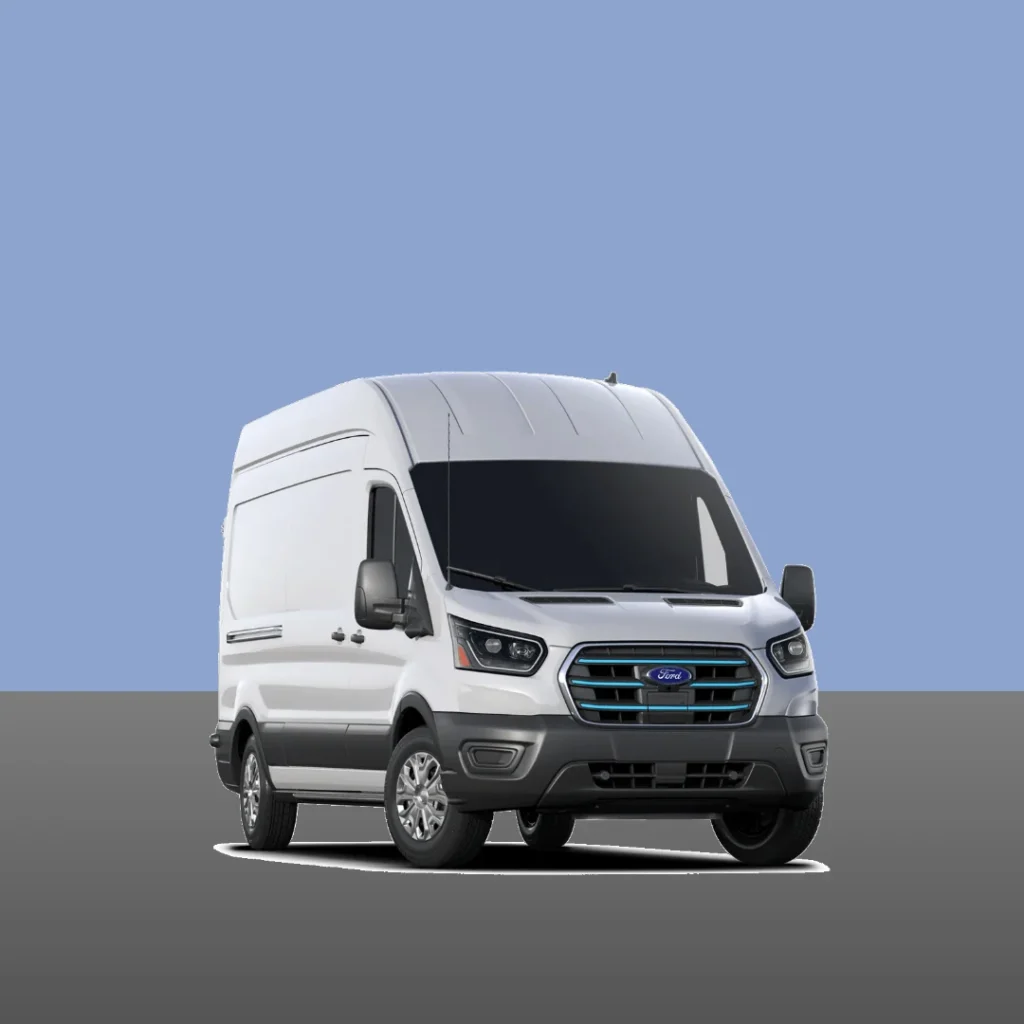
Ford E-Transit
The Ford E-Transit is a big breakthrough in the commercial vehicle market as it introduces a product that is eco-friendly, efficient and practical while the old chemical energy-driven vans are solely for businesses. The fact that electric vehicle (EV) segment is gaining momentum is creating the perfect setting for the Ford E-Transit to be the best option for businesses that want to save money on lower emissions and fuel. This in-depth guide uncovers what the Ford E-Transit is, its benefits to business, key aspects to consider before purchasing, and a thorough comparison with the regular Ford Transit.
Manuals By Year
What is the Ford E-Transit?
The Ford E-Transit falls into an all-electric category and is in essence a Ford Transit van which is commonly known for being the most popular vehicle among businesses that need a versatile vehicle to use for their deliveries, service or transportation. It is situated among Ford’s list of EV alternatives – the E-Transit is the best example of the company’s intention to join the electric propulsion club of the time -, which first turned out into reality not that long ago. This is possible because the E-Transit still offers cargo space and utility almost the same as the original van model while achieving zero emissions and lowering the operation costs of the vehicle.
Key Features:
- The E-Transit operates with a 68 kWh battery that delivers an expected distance of 126 miles after a complete charge that should meet the requirements of urban and regional delivery services.
- Companies operating the E-Transit have the option between a Level 2 charging station and a DC fast charger to receive power. A DC fast charger allows the vehicle to achieve 80% battery recharge in 34 minutes thus cutting downtime to a minimum.
- The Ford E-Transit delivers the same cargo areas available in the standard Transit including 318 to 487 cubic feet depending on your pickup choice. The E-Transit reaches its maximum payload limit at 3800 pounds which enables it to transport heavy delivery items.
- The E-Transit operates using electricity from its electric motor which produces 266 horsepower and 317 lb-ft of torque and provides both efficiency and quiet operation.
- Technology and Infotainment: E-Tronjit Ford’s Sync is equipped with 4 systems, which includes characteristics such as navigation, hand-free calling and Apple CarPlay/Android Auto Integration. It also comes with various safety and driver-help technologies such as pre-turning assistance, lane-key assist and adaptive cruise control.
Benefits of the Ford E-Transit for Businesses
Cost Savings
The major advantage of operating the Ford E-Transit stems from its improved fuel economy which enables businesses to cut their petroleum expenses. The process of charging electric vehicles produces cheaper costs than gasoline or diesel fuel thereby reducing business operational expenses by substantial amounts.
Electric vehicles operate with less complex chain of components compared to vehicles which use gas or diesel. The Ford E-Transit demands reduced maintenance because it contains lesser moving parts. Electric Transits skip traditional oil maintenance procedures because they use electric-based regenerative brakes that extend brake life. These accumulated savings become substantial with continuous time passing.
The Ford E-Transit along with other electric vehicles qualifies for various government rebates and tax benefits and grants which lower the total purchasing costs of businesses.
Environmental Impact
Companies that select the electric E-Transit as their transportation option achieve considerable decreases in their environmental impact. During operational use the E-Transit releases no emissions thus making it suitable for businesses that want to achieve environmental targets or satisfy stricter air quality standards.
Initial Purchase Price
Purchasing the Ford E-Transit upfront will cost more money than acquiring a typical Ford Transit. Businesses experience lower ownership expenses from the Ford E-Transit by restricting their fuel purchases and vehicle maintenance costs. Businesses should use available funding opportunities combined with government incentive programs to lower the purchase cost of the Ford E-Transit.
Charging Infrastructure
The process of charging needs proper attention from businesses for their operations. To power up the E-Transit users must either charge it at their premises or at public stations that provide charging services. Service consistency for businesses becomes more difficult when operating in areas without sufficient charging options. Businesses that provide access to fast chargers combined with home charging stations minimize the time their vehicles need to spend off the road.
Range Limitations
The Ford E-Transit has a maximum operating range of 126 miles which many companies would find adequate for their urban or regional delivery routes. The decision about range requirements for businesses depends upon their delivery distances and whether they serve urban or rural areas.
Service and Maintenance
The Ford E-Transit along with other electric vehicles demand specific servicing techniques. Service establishments across business areas must show readiness to perform electric vehicle-specific checks on batteries and electric motor maintenance because EVs create fewer mechanical breakdowns.
Comparison Table: Ford E-Transit vs. Traditional Ford Transit (Gas Version)
| Feature | Ford E-Transit | Ford Transit (Gas) |
| Battery Capacity | 68 kWh | N/A |
| Range (Miles) | Up to 126 miles | 400+ miles (depending on model) |
| Charging Time | 34 minutes (DC fast charger) | N/A |
| Fuel Type | Electric | Gasoline/Diesel |
| Cargo Space | 318 to 487 cubic feet | 246 to 487 cubic feet |
| Payload Capacity | 3,800 lbs | 4,000 to 5,000 lbs |
| Maintenance Costs | Lower (no oil changes, fewer parts) | Higher (engine maintenance) |
| Government Incentives | Yes | No |
Conclusion
Businesses ought to appreciate the Ford E-Transit as a sustainable cost-effective dependable substitute against conventional gasoline-driven vans. Companies interested in fleet transformation should consider the Ford E-Transit because of its extensive range and minimal upkeep and innovative features. The long-run financial efficiencies as well as environmental advantages surpass startup expenses and charging system requirements for typical corporate purchasing decisions.
